Text by Koo Wei Chee (BSBCC Intern Student)
Photos by Chiew Lin May
There was a project that I assigned for to upgrade myself to do something more advance besides the regular routine of what volunteers and interns can do and I got myself one, Thye Lim and Lin May gave me a big project to do, the objective is rehabilitate young sun bears Sunbearo, Ronnie 2, and Loki back to the wild.
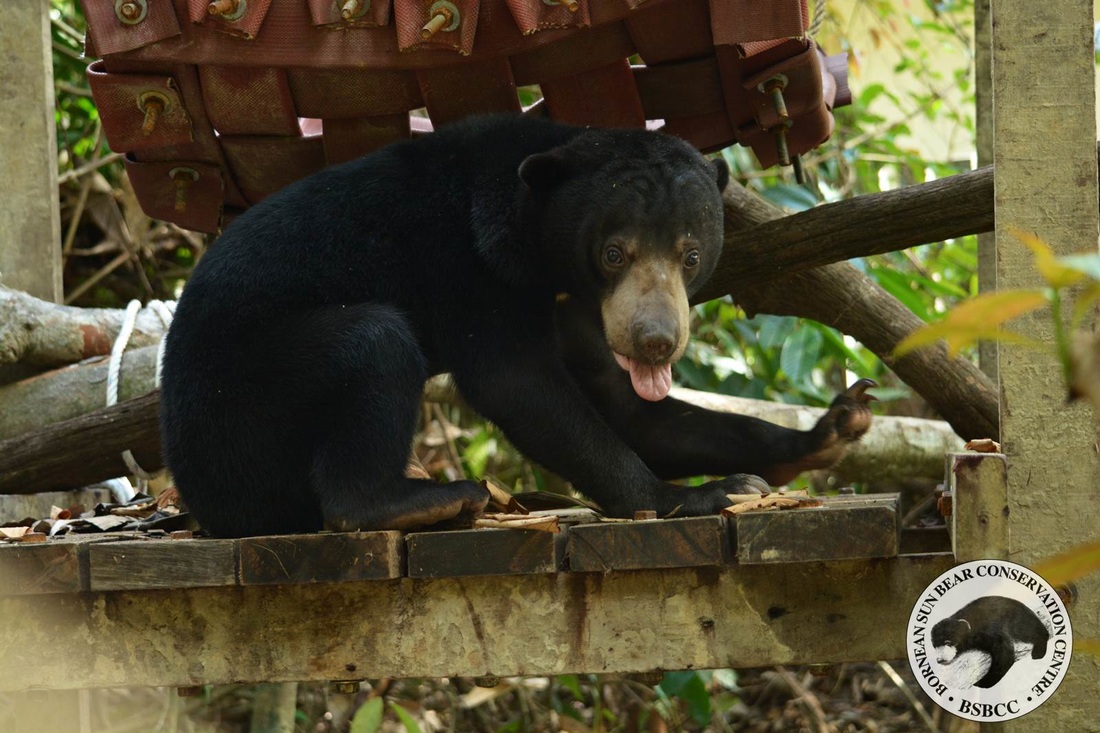
Sunbearo, a 1 year old a male juvenile, was kept in a Mini Zoo Hot Spring, Tawau, South Eastern of Sabah before he was handed over to the Sabah Wildlife Department and BSBCC.
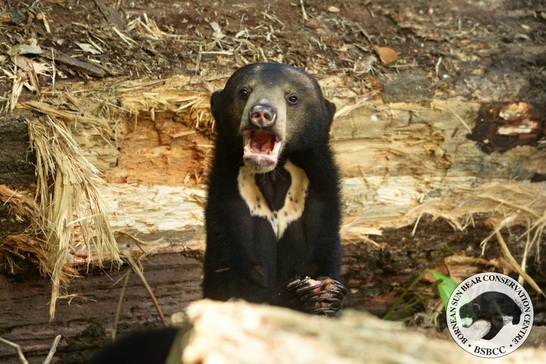
Loki, a 1 year old female juvenile, was discovered in the backyard of an inn, where she had been illegally kept as a pet for about five months. It was confiscated by the Sabah Wildlife Department and sent to BSBCC on 24th March 2014.
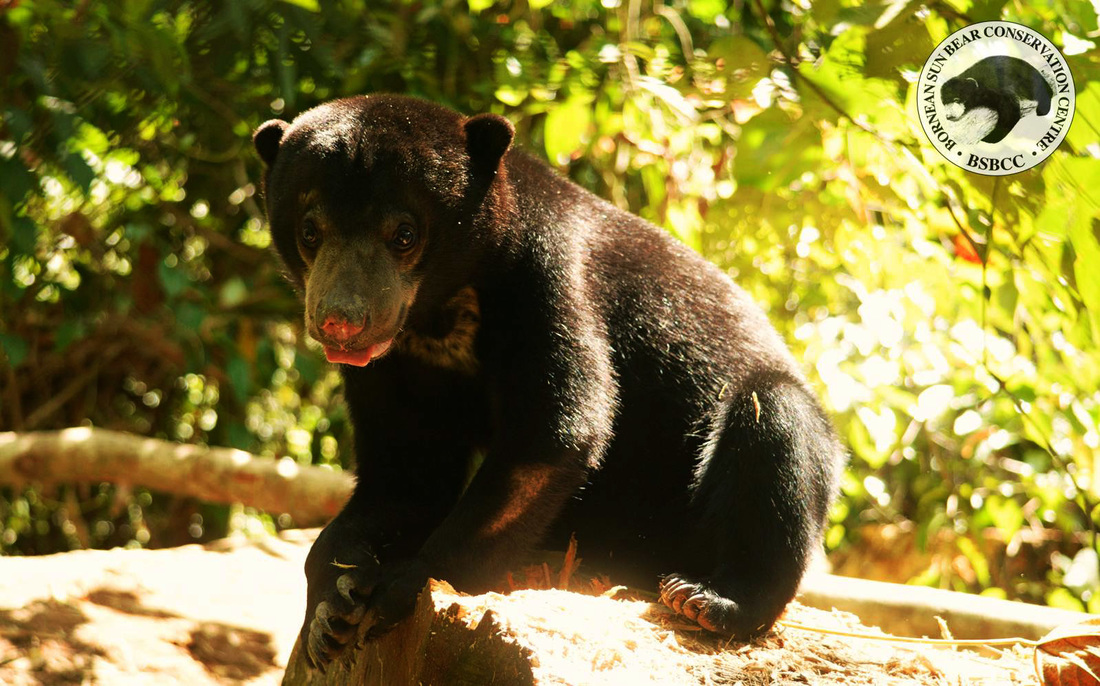
Ronnie 2, a 1 year old female juvenile, has an unknown history but we believe that she was kept as an ex-pet and was sent to the BSBCC on July 15, 2014.
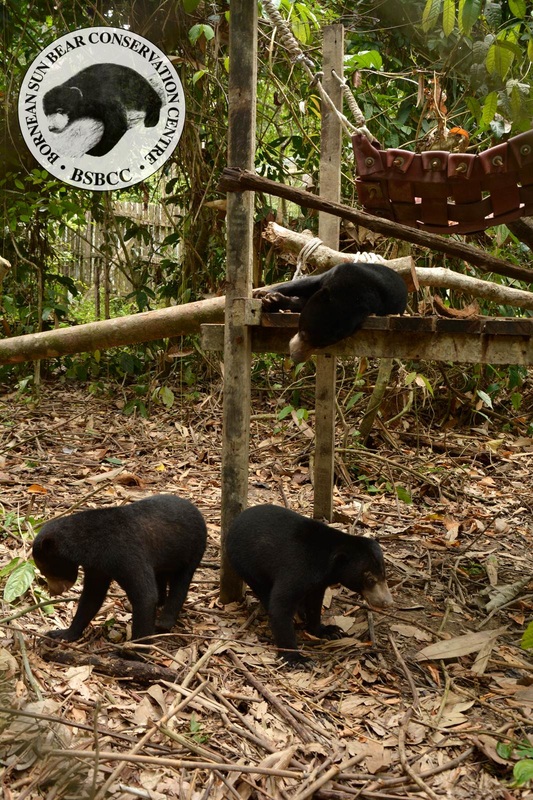
They had already been integrated and became very good friends, rolling and playing around every day.
Fence training is a session for the bears to be aware of electric fences. The place where they are trained is in a moderate size indoor enclose den called training pen with 6 lines of electric wires from top to bottom in the inside perimeter. It is a nightmare for them but a very crucial and important stage to let the bears know that they should not touch those wires or else will be zapped in an electricity. One bear is only allowed in the training in one time if the bear was the first time training in the training pen because if there were two or more newly introduced bears in the training pen and one got zapped, it will immediately thought that it was the other bear which made the torture where will result a bear fight. The fence training period depend on the bears’ progress and it may take up to three months for the bears to get used to the training pen or never. Fruits were scattered near the sliding gate to encourage the bears to go into the training pen, fruits were then scattered near the electric fence once they feel confident to enter to the training pen. Each session of fence training is 30 minutes, the keepers and volunteers in charge have to observe carefully and write down in a table quickly of any moments and behaviours of the bears during the fence training session, this is the most tiring part when keeper in charge sometimes have to recall back what has not been written after the training session. A bear is considered pass the fence training is when it can be able to move freely between cage and training pen in normal behaviour without zap be able to avoid the fence. The bears will then be able to proceed to the next training, the forest enclosure training.
It was hard to watched when we saw them got zapped the first time and they barked, becoming very stressful and will start to pace in the furthest dens they can be from the training pen. Sunbearo was the one the which got the most zap, he did not know what to do at one time but to climb up and got even worse to be zapped in the second electric wire, Lester quickly run to switch off the electricity of the training pen, Sunbearo then climbed down and run to the furthest den and started to bark and moaning, he knew the pain, looking at us and keep moaning for doing this to him.
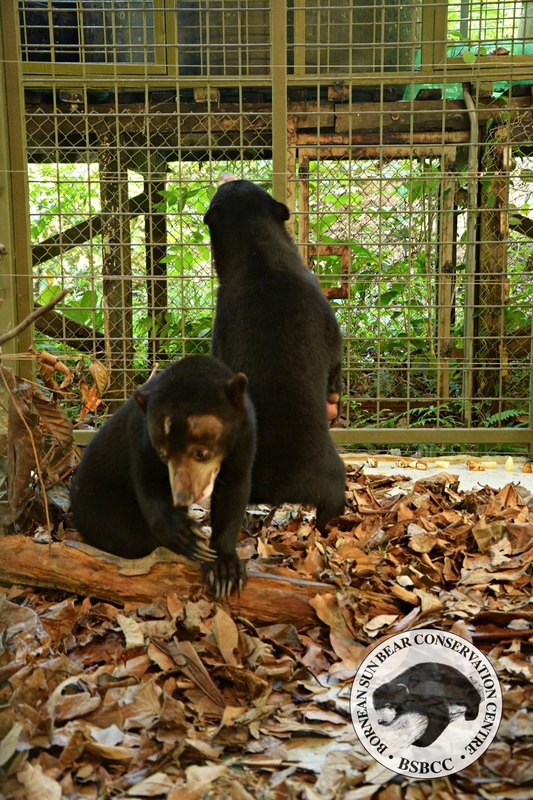
Sunbearo stands up in the training pen and see what’s going on outside while Loki continues foraging in search of foods.
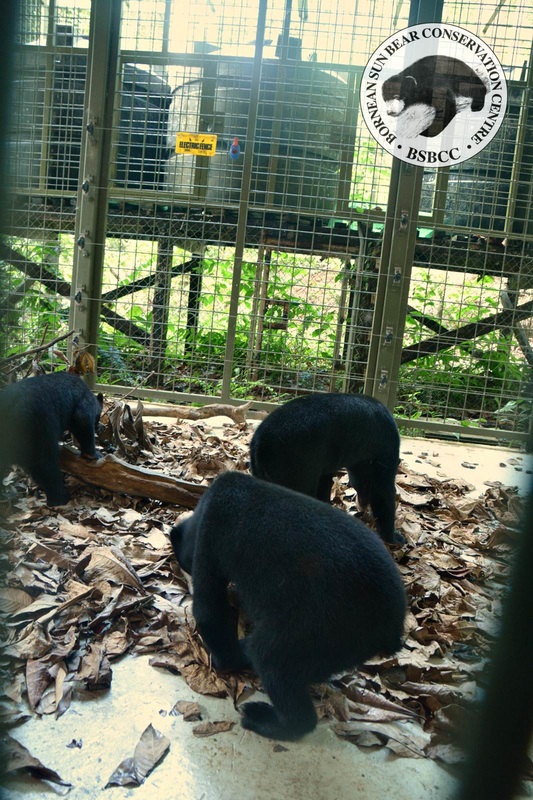
So glad to see the Sunbearo, Loki, and Ronnie are in the training pen at the same time foraging for food.
Integration sun bear is one of the rehabilitation process in BSBCC. Integration between rescue sun bears is one of the rehabilitation process in BSBCC through which the bears can learn pertinent skills for survival in the wild. There are some facts which needs to evaluate before targeting any two or more sun bears for the integration training to prevent or decrease bear fight possibility: (1) age, size, and weight have to be similar, if they have big difference, a bear would definitely be killed if they fought; (2) the bears have to be healthy. Younger bears and group bears seem to have a high possibility in successful integration because they have less thought, more curious, and have social group experience for the group bears. Before integration process, few pails of water and a fire extinguisher have to be prepared near the integration cage in case of emergency. Integration lasts for one hour, a paper with a list of table, behaviour codes, and remarks was used to write down the behaviours of the bears in any movement during the integration, this is the detail or data which will be the appendix of the research on how those bears react with each other.
Integration Pros and Cons
Pros
- Allow two or more bears to live in the same cage.
- Save more cages for more rescued bears.
- Allow bears to be less stressful where it turns out that group bears will have less pacing because they have companions to play with and to promote other positive behaviour.
- The best enrichment for a bear is another bear
Cons
- Bears are solitary animals, they may think is normal to have another bear as companion, becoming less defensive to wild sun bears, resulting a concern for rehabilitation.
Sun bears appears to be solitary because their food are scattered all around the forest and they need their own territory to maintain their own food supply, thus for those integrated captive sun bears in the forest enclosure, we need to scatter enough foods all over the area to prevent them for fighting for food supply. Bears and others animal are solitary mainly due to the food shortage issue, in captive condition, foods are always been provided, so we encourage them to stay in a group to promote positive behavior development. Although there is a conflict between the bears natural characteristics and integration, it is used to assist the bears to get along well with each other so that they can be in a single forest enclosure because the main issue is about the centre’s limited number of forest enclosures and dens. Newly rescued captive sun bears need their own space, thus the integration stays an important role for the bear care unit.
On 22 November 2015, we integrate Sunbearo, Loki and Ronnie with Montom (a 3 years old sub adult male bear) and Susie (a 4 years old adult female bear).
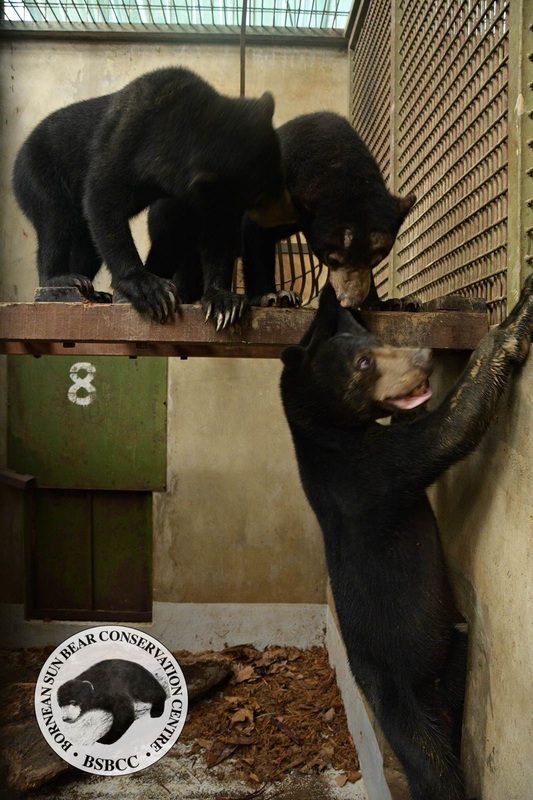
“Come on! Let’s play, what you are waiting for?” says Loki bites Montom’s neck softly to try to pull him to the mini platform.
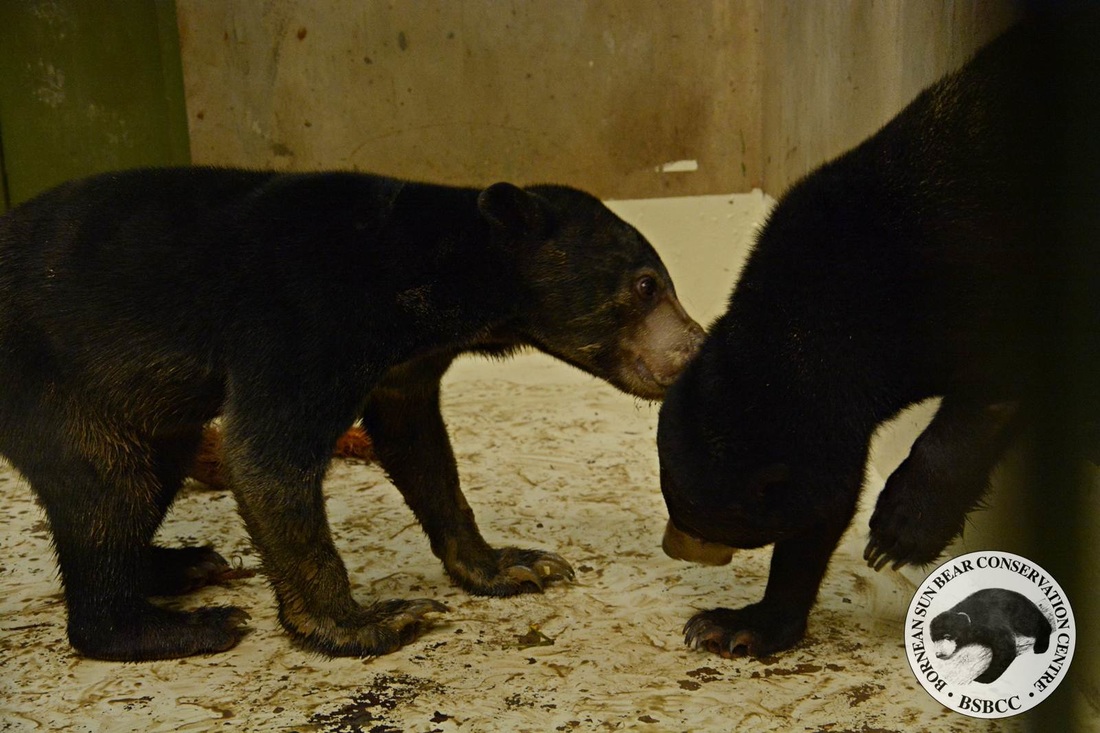
Montom sniffs Ronnie as a welcome greeting to his place
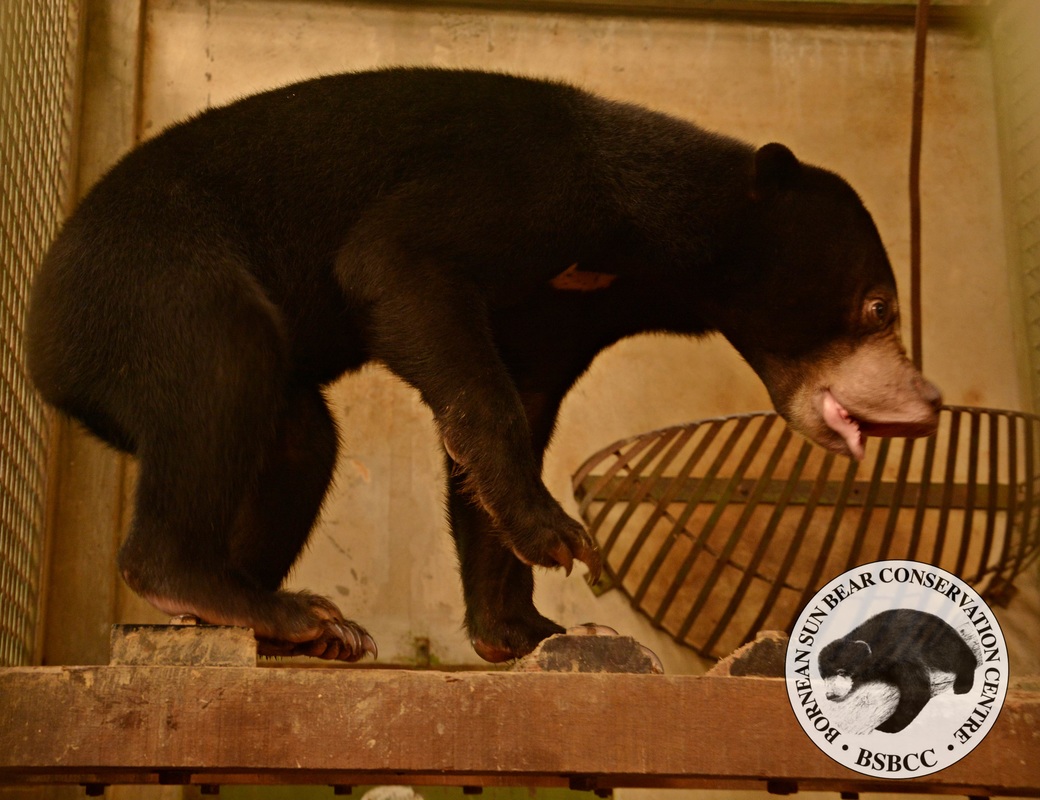
Sunbearo gave Montom and Susie an alarming growl
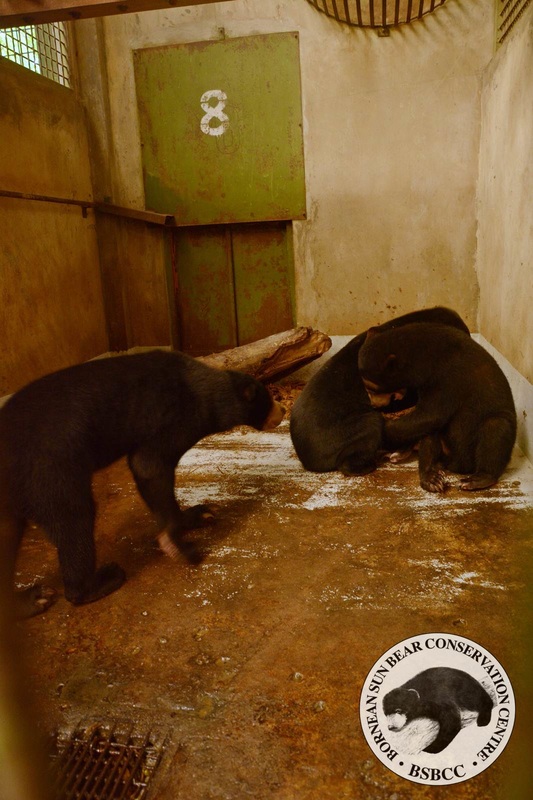
We were surprised that Sunbearo, Ronnie, and Loki had a very fast progress in the integration and fence training with Montom and Susie where they played, foraged, and eat together without aggression. Three weeks after the training, the management team decided to let Sunbearo, Loki, and Ronnie to enter the last stage of training, the enclosure training in forest enclosure.
Forest enclosure training is the practice of the applications given to the sun bears in the previous stages of all training and enrichment such as giving them the second chance to climb, toys to improve their senses of smell, sight, touch and taste, integration training and electric fence training. Before the bears went out to the forest, prepared fruit pieces are placed near the cage or guillotine door to encourage the bears to go out and eat, time by time when the bears are confident with the area, the fruit will then be placed further from the cage to encourage them to go further to the forest. At least two keepers have to take a broom and keep an eye of the bears around the forest enclosure outside perimeter to prevent the bears to climb out from the enclosure because the bears may still not get use to the electric fence and may climb up if they got zapped. The training duration for keepers to watch over is the same as training pen, it may take months to have a success for the bears to touch the ground or even not, but the training is not over as it lasts until the bear can really be able to take care of itself for example searching foods in nature, climbing trees and make nest. This is the last stage for the bears before they can be the candidates to be released back to the wild, thus this training is crucial, giving the bears a second chance to go back to their natural wild habitat in a very large area of natural forest.
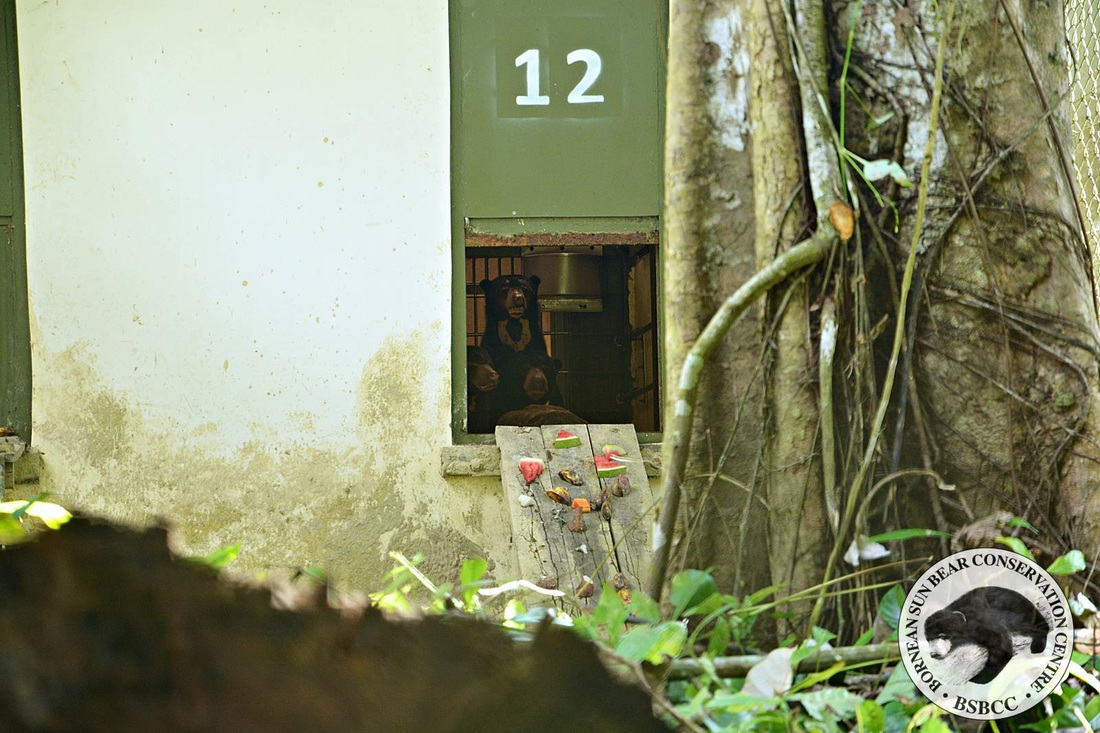
Sunbearo, Loki and Ronnie are surprised to see the world outside.
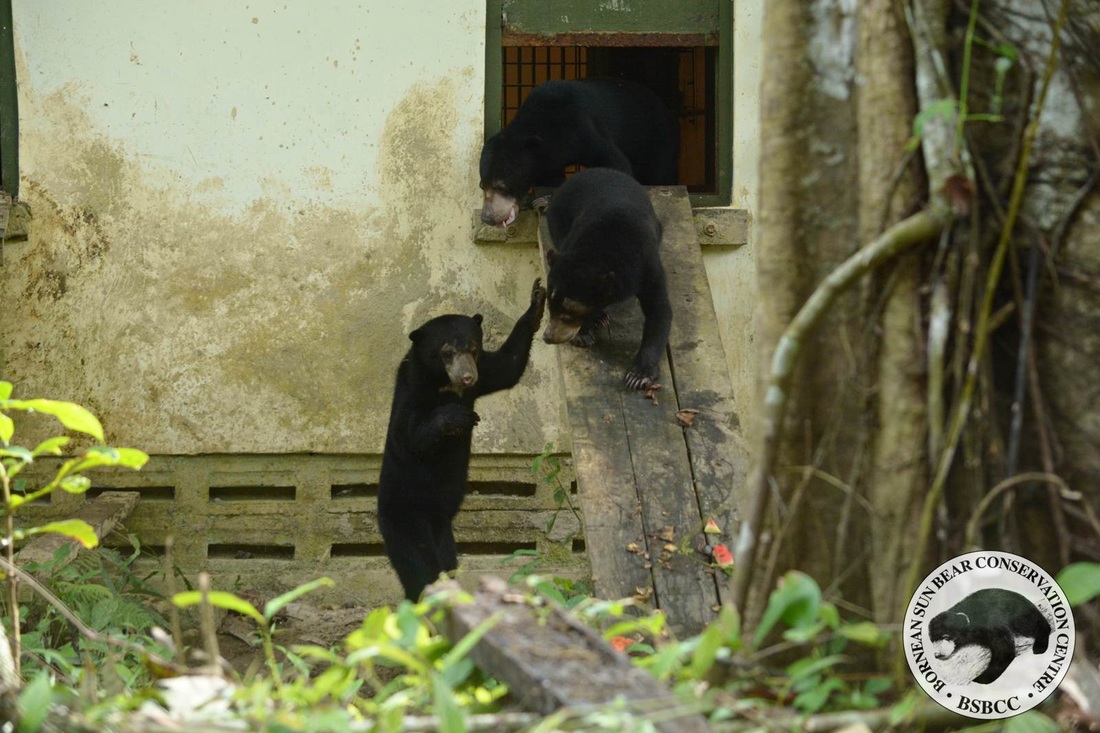
“Hey Loki, I think I’ve found something there, should we try to take a look?” says Ronnie on the ground.
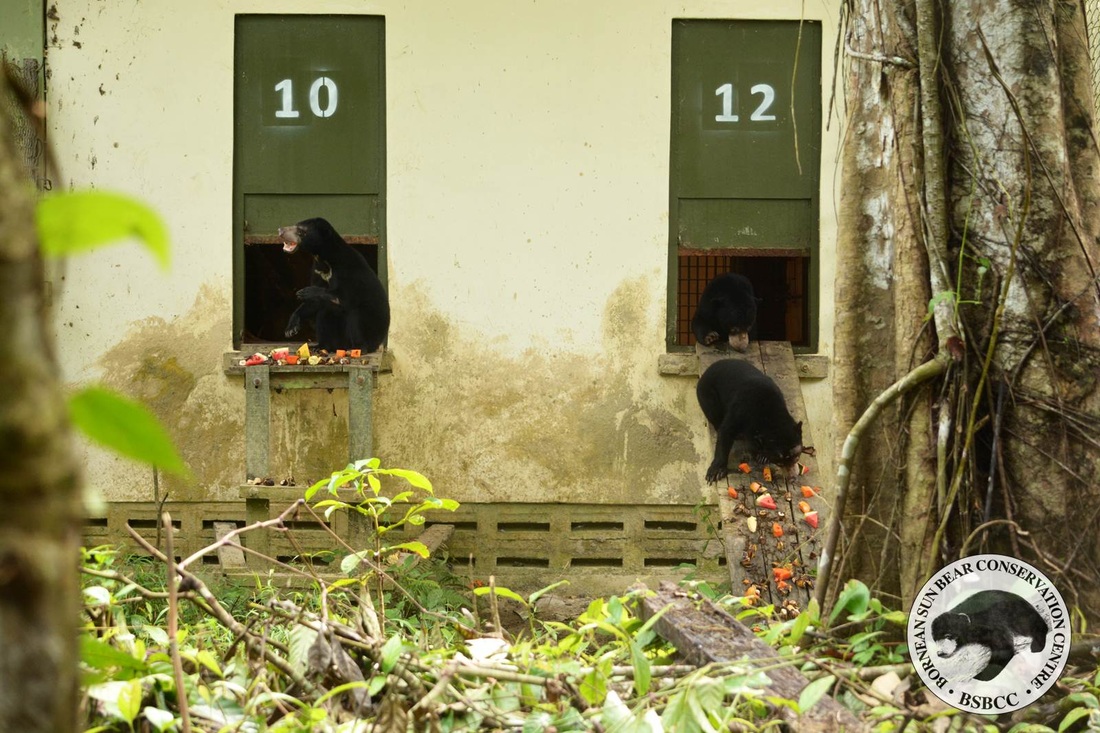
Ronnie in den 10, watching far away to see the world; Loki was too hungry, keep on eating through the way; Sunbearo still don’t seem dare to go out.
Within two weeks the three bears got their first zap from the electric fence near the dens. They still got zapped because they were introduced to a new environment although they already knew there is electric fence which results an environment shock to them. In the first week, I put their prepared cut fruits near their dens to encourage them to go out and explore the enrichment and environment. When they got used to the area, I then started to put further from the den and deeper to the forest enclosure time by time to encourage them to explore more.
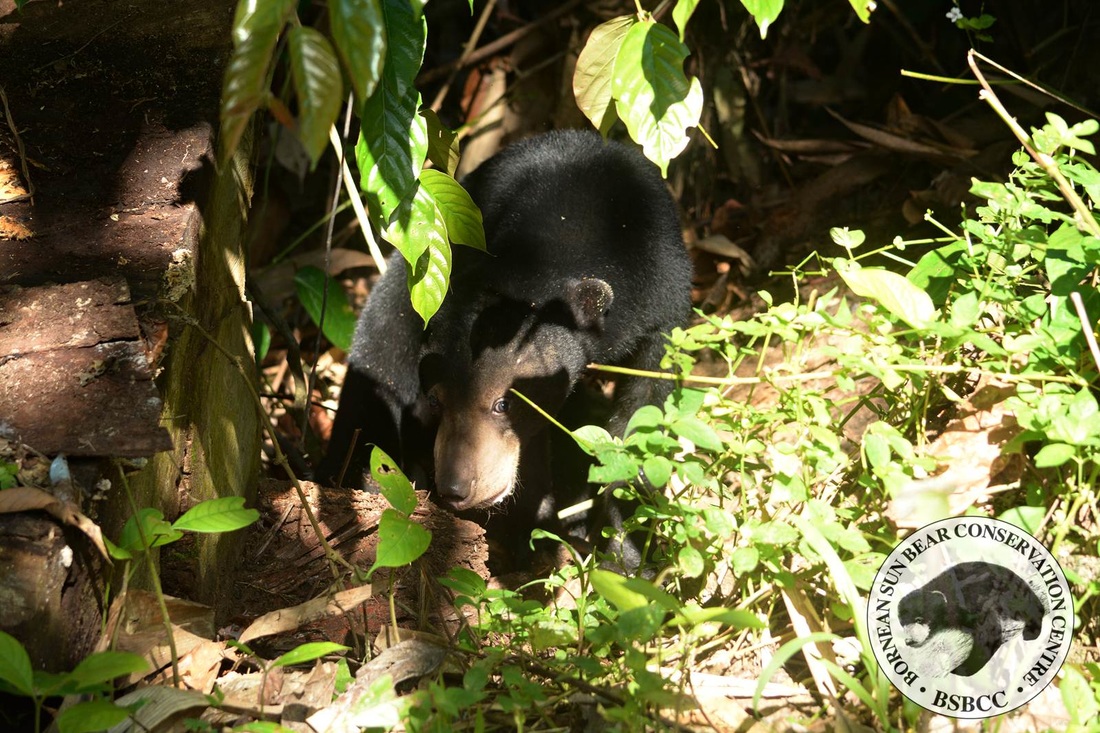
Sunbearo feels more comfortable with the place and starts to explore deeper to the forest
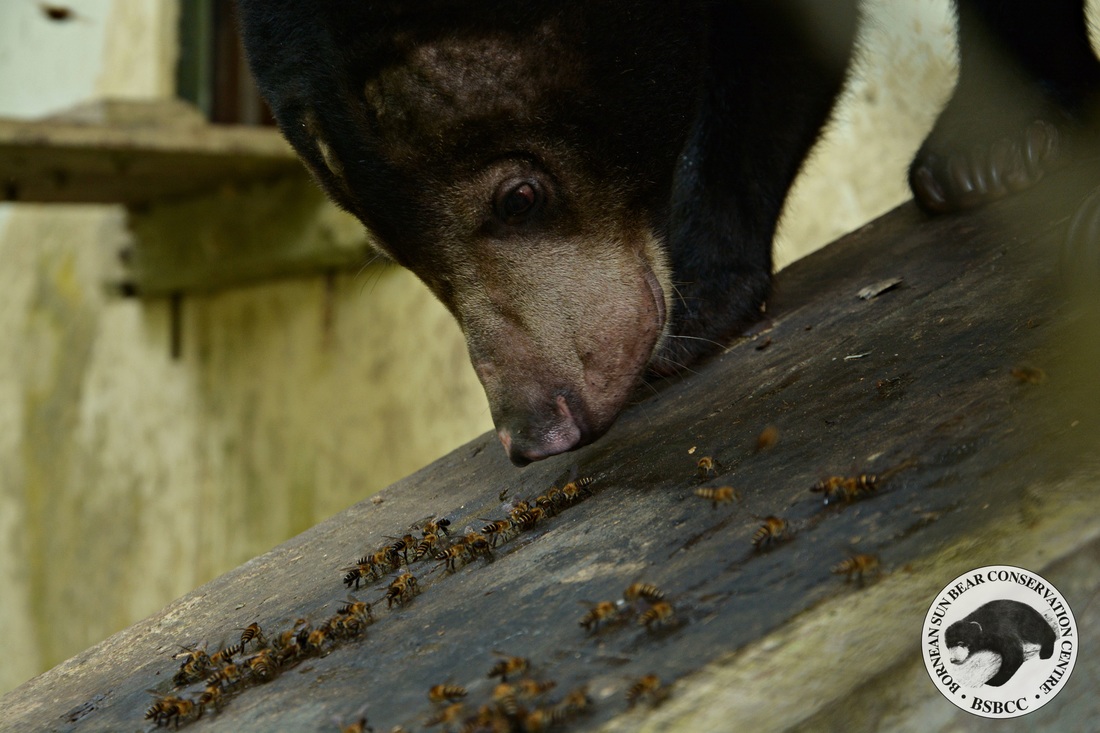
Wow! Loki is eating honey bees, she should be enjoying it to lick some honey on the ram and eat some bees as bonus protein
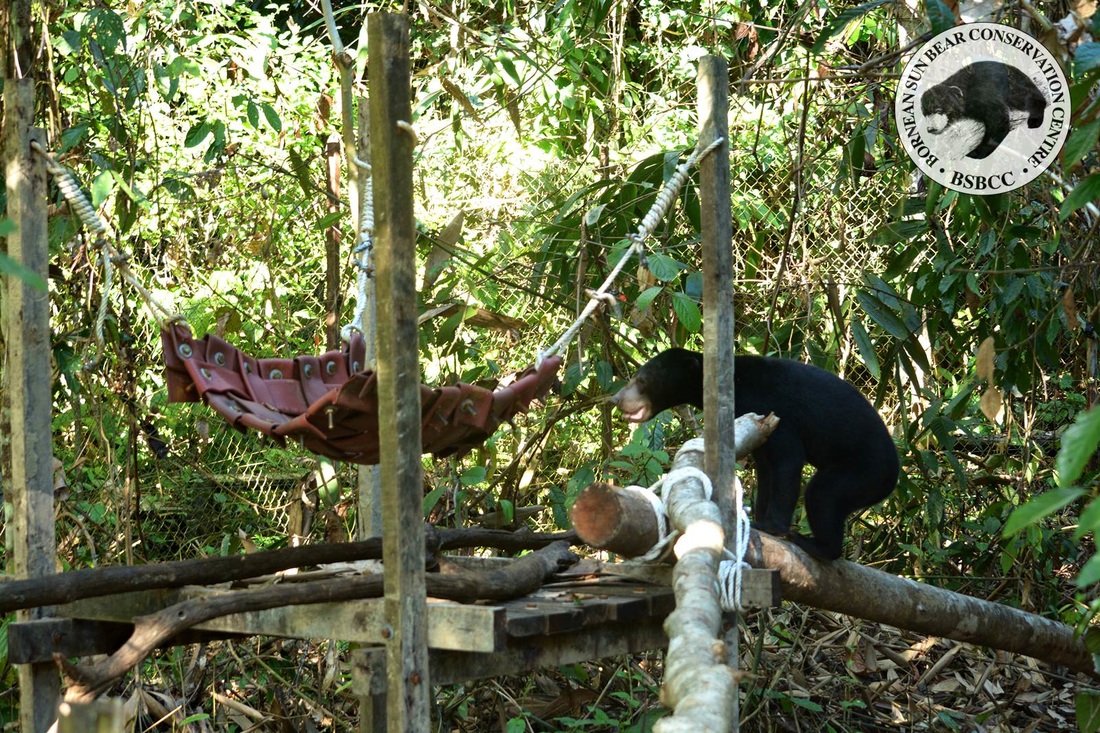
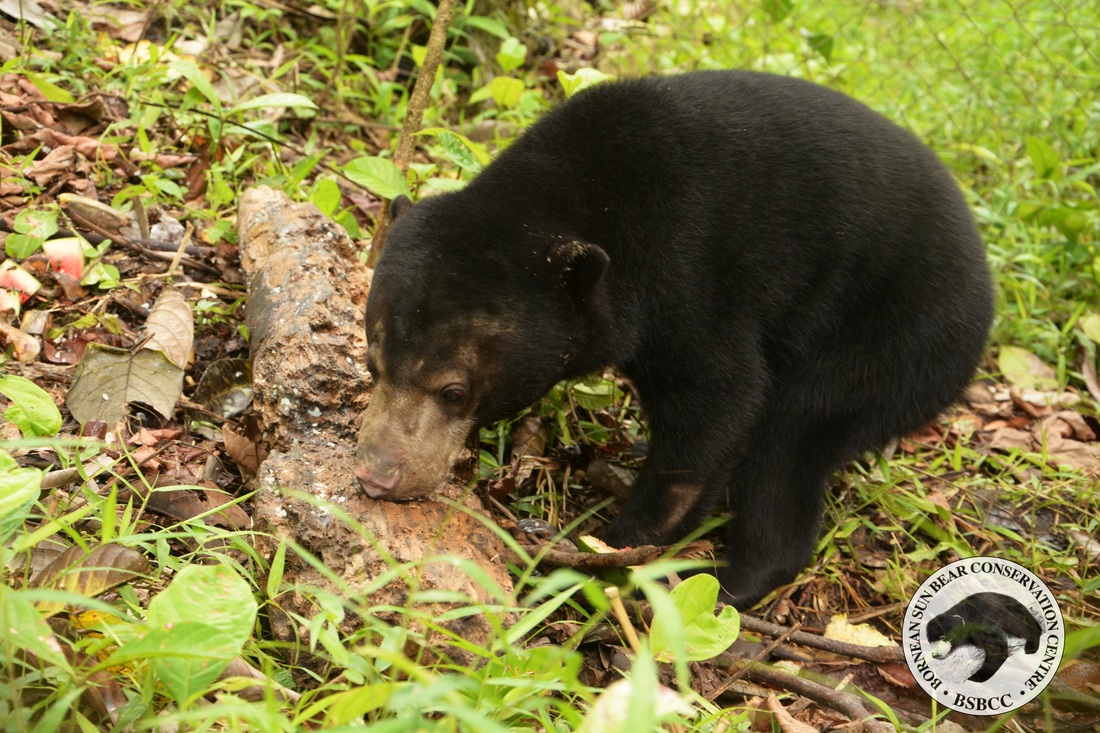
Ronnie, foraging on the forest floor
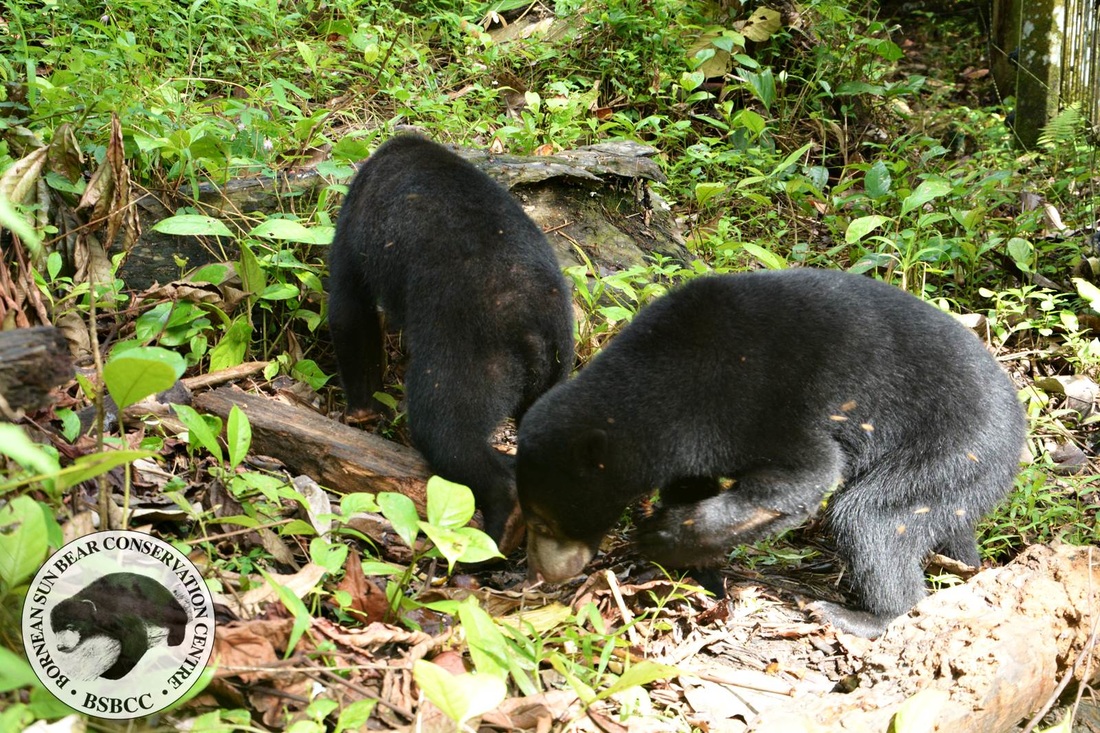
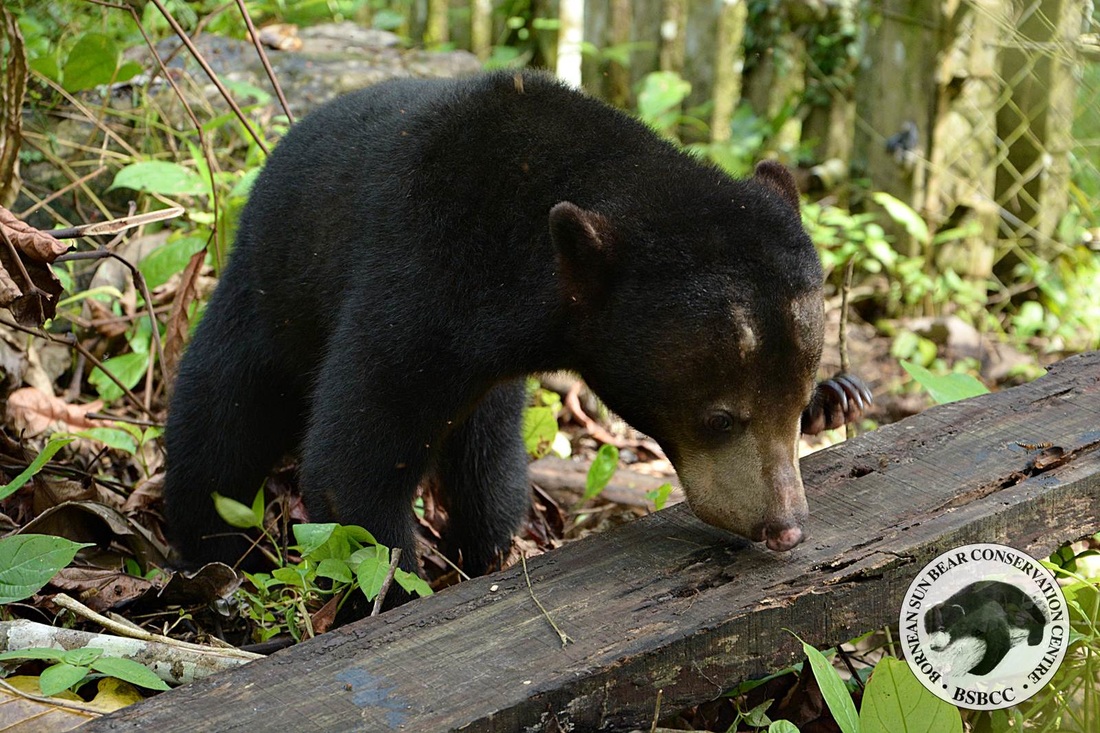
Loki was checking the ram to see if there’s any remaining honey left
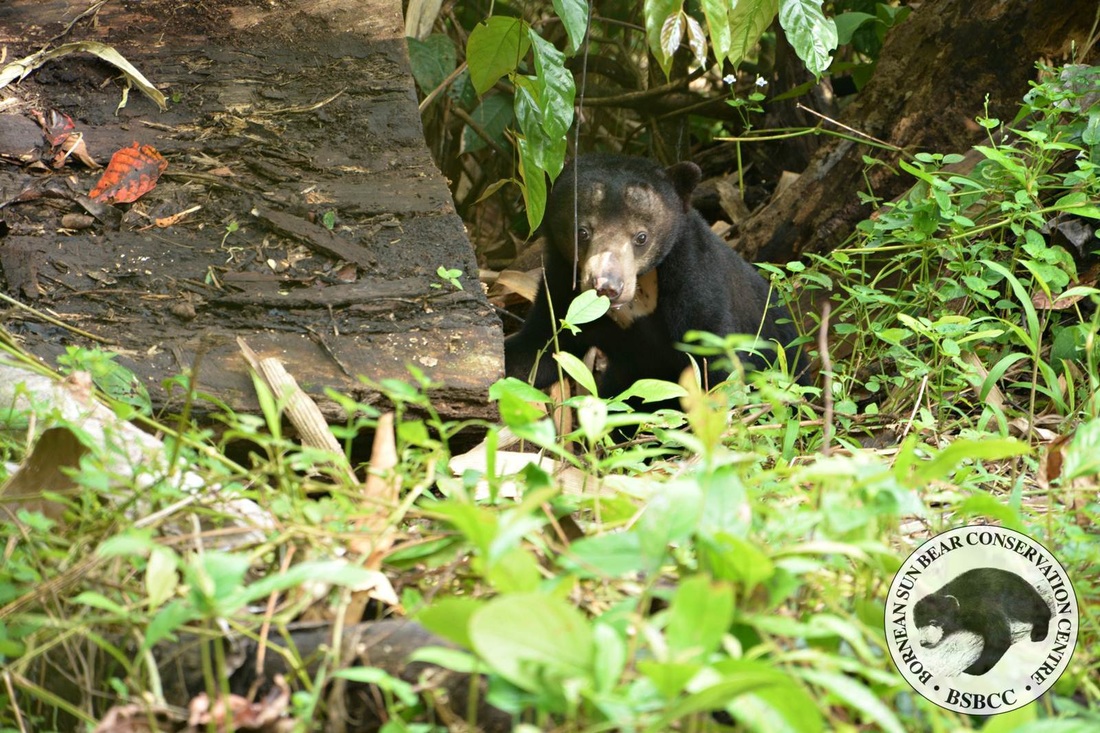
“What are you doing there, can’t you go away?” said Loki as she was very alert to the movements of the surrounding area when she was foraging
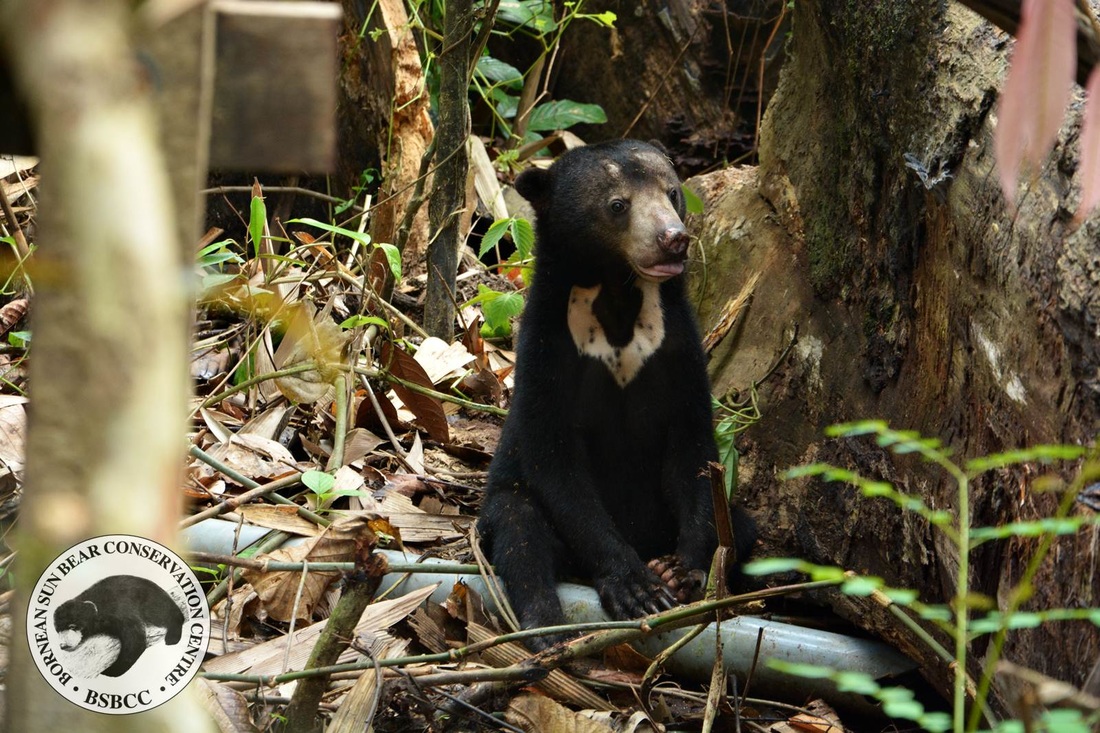
Loki took a quick rest after foraging for so long
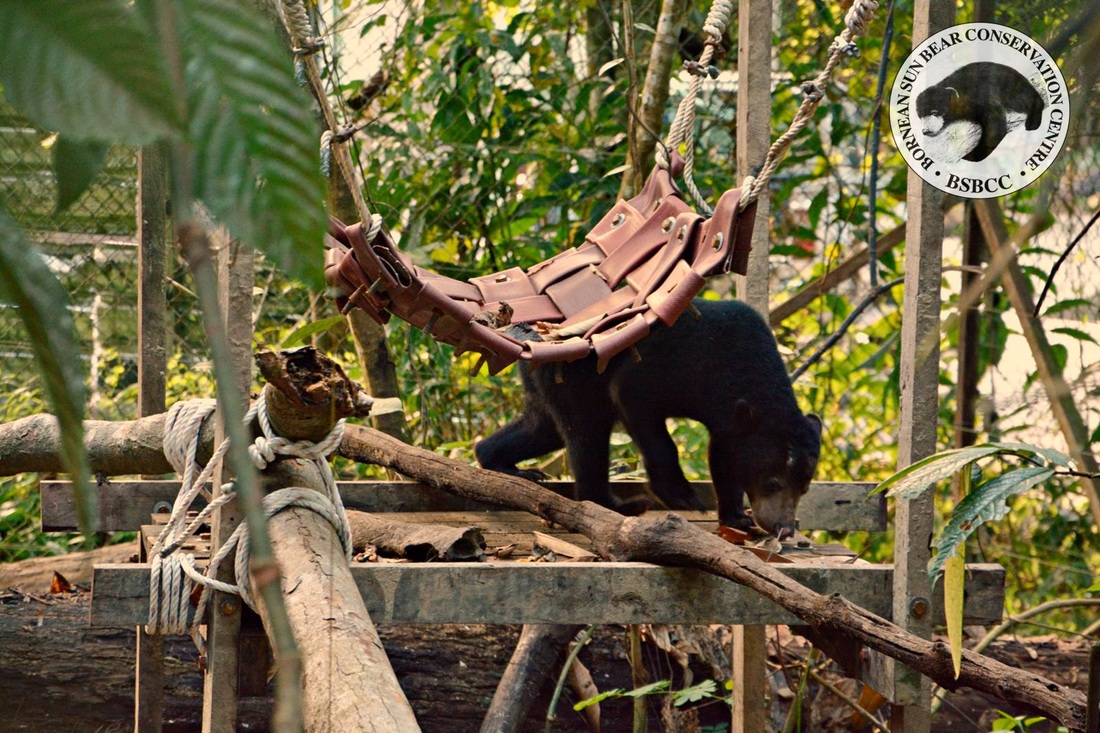
Loki wondering around on the A-frame platform build by our volunteers
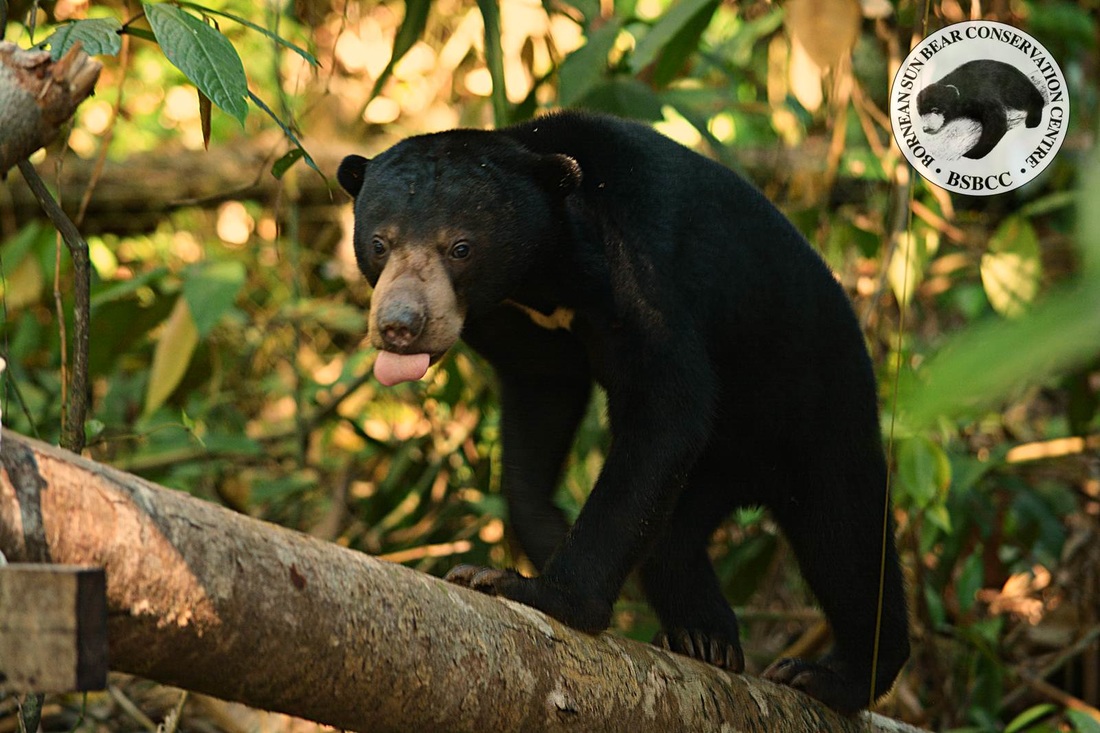
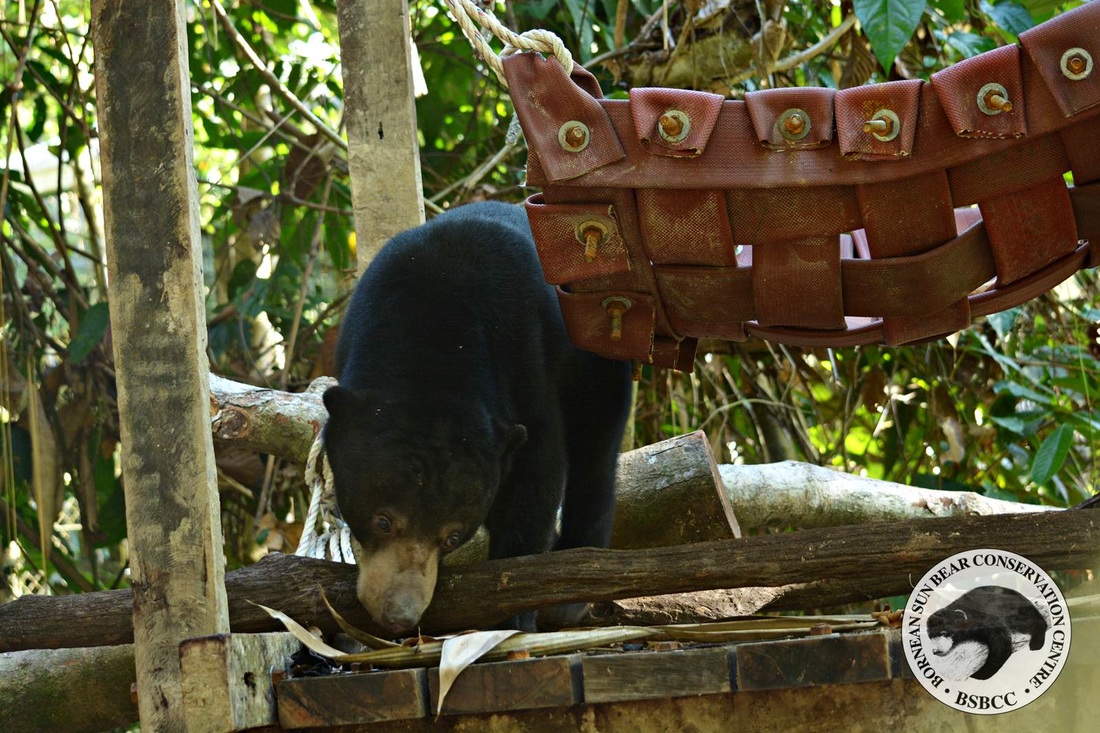
Sunbearo was wondering how to climb down from the A-frame platform
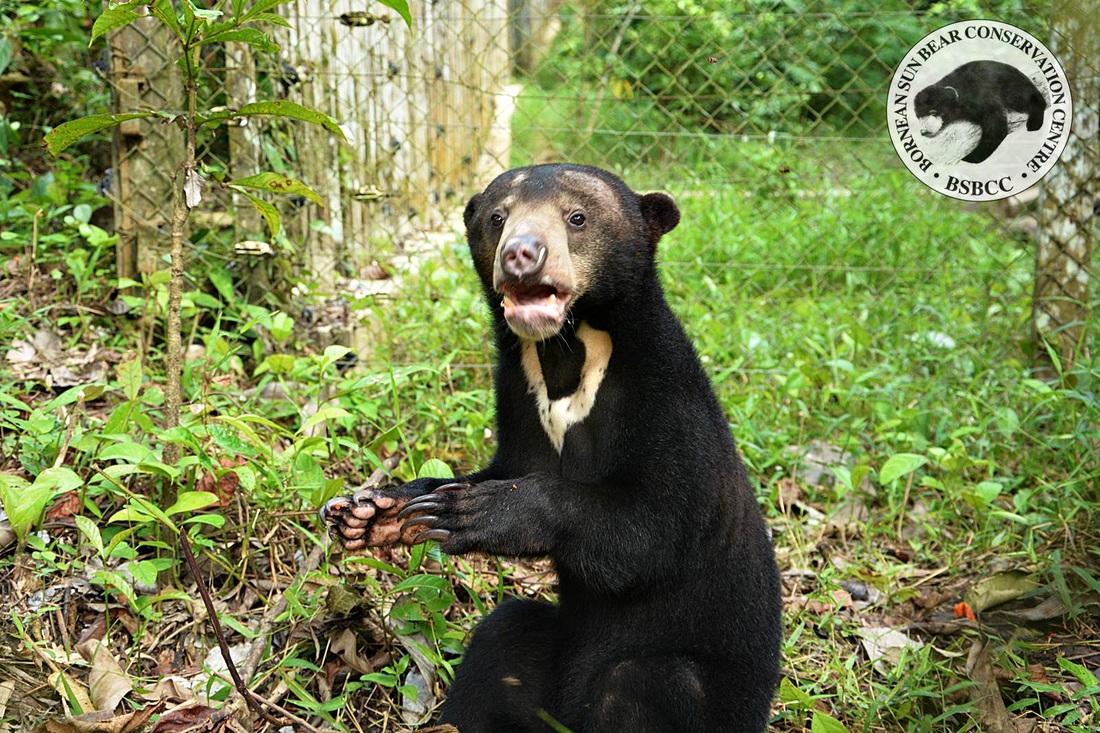
“Ah! Where’s my food?” said Loki when she saw us but didn’t see any fruits more which we scattered on the forest enclosure
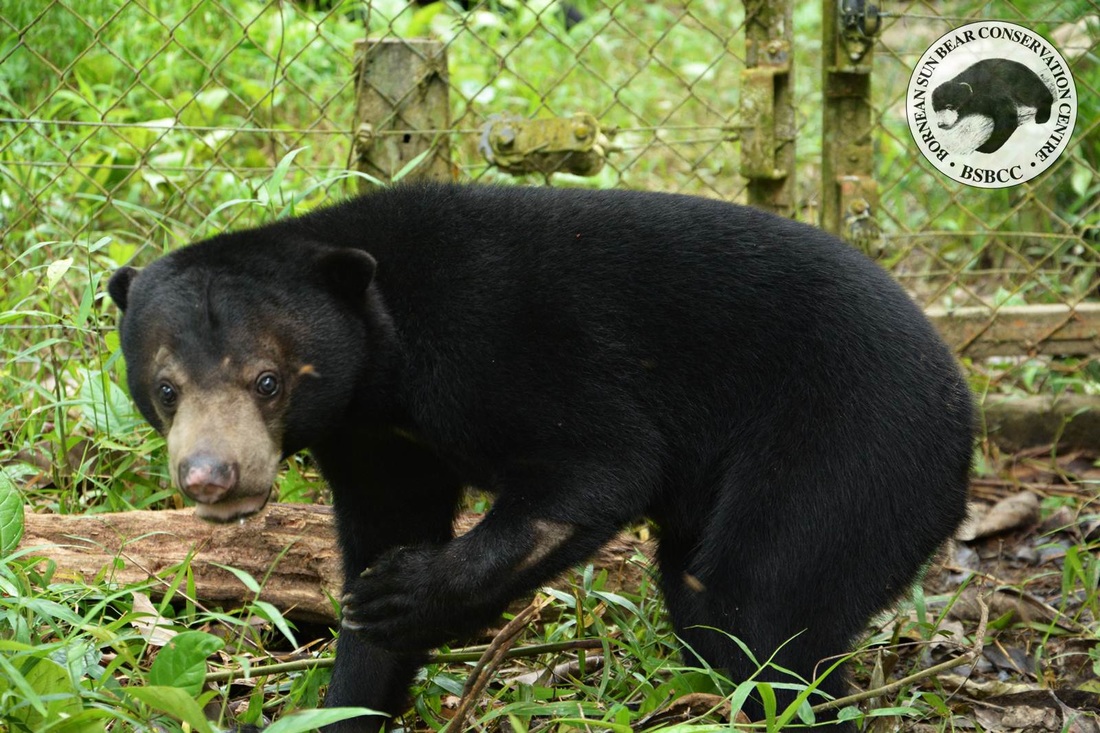
Ronnie was alert to the movements and sound on the surrounding area
The training on forest enclosure E has some issues not only the bears character and behaviour but also the location itself as it is located near the bear house entrance. Keepers who are not in charge of the training will sometimes do their work outside the bear house which made those sound-sensitive bears to be extra alert, thus whenever there’s a sound, even footsteps of us, the bears which are still not used to it will rush back to their dens.
At 24th December 2015, it was a very special day because guillotine door was ordered to close after the bears had gone outside forest. When the guillotine door was shut down, the bears were in alert and stayed very closed to the door, but after a few minutes, Loki and Ronnie started to do what they did as usual, foraging, eating bugs, ants, and termites. Sunbearo then followed them and went even further, he went to all the areas of the surrounding fence and unluckily got zapped again, and he pulled back but not long and went deep in the forest in search for ants and termites. It was a special day indeed that all the bears start confident explore the environment.
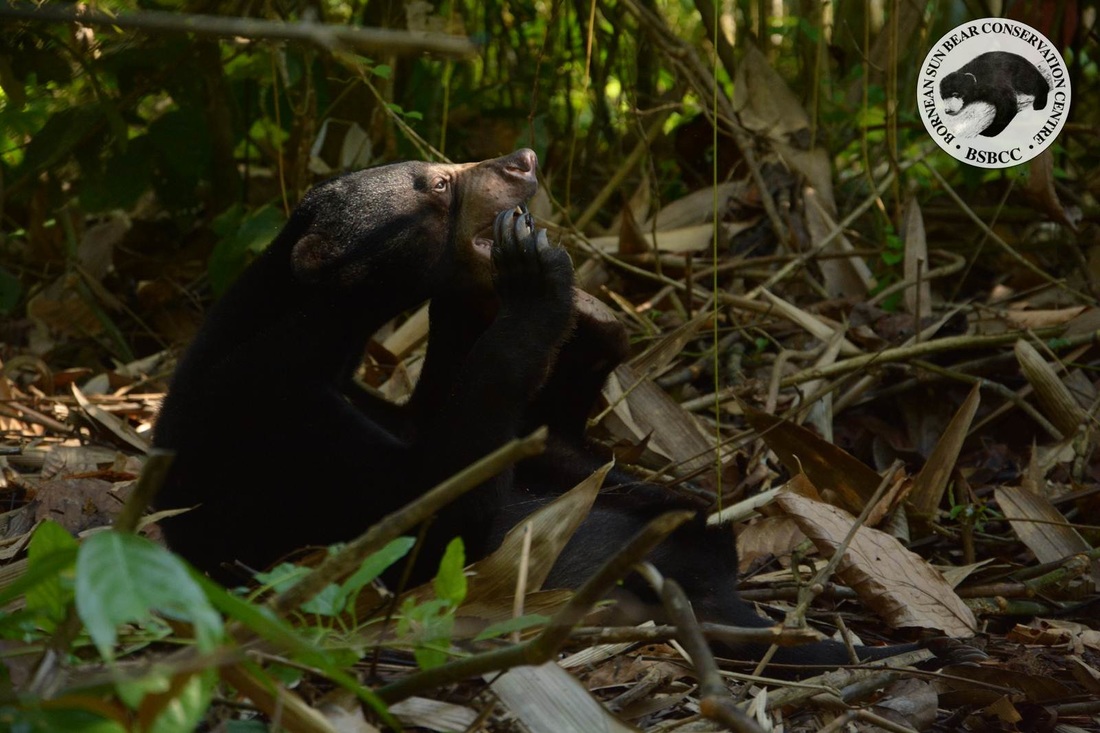
Sunbearo, having his precious coconut on the forest floor
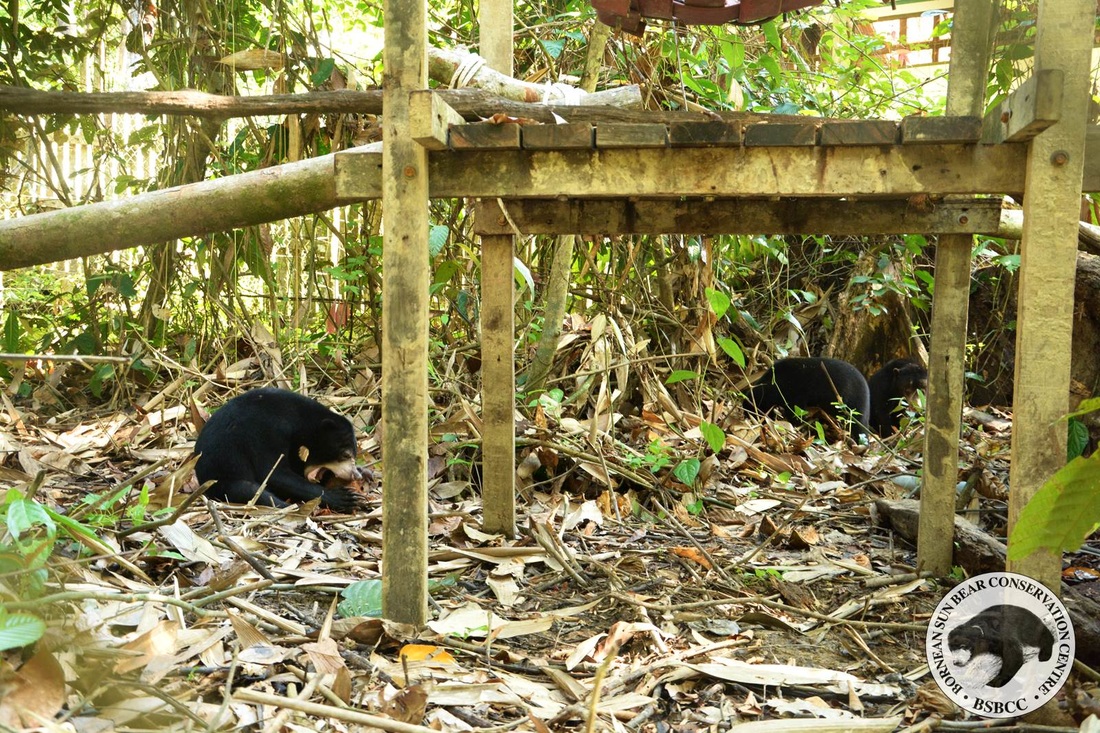
Sunbearo had a coconut found as a reward which we threw inside the forest to encourage the bears to explore more. Oops! Loki (on the right) saw that.
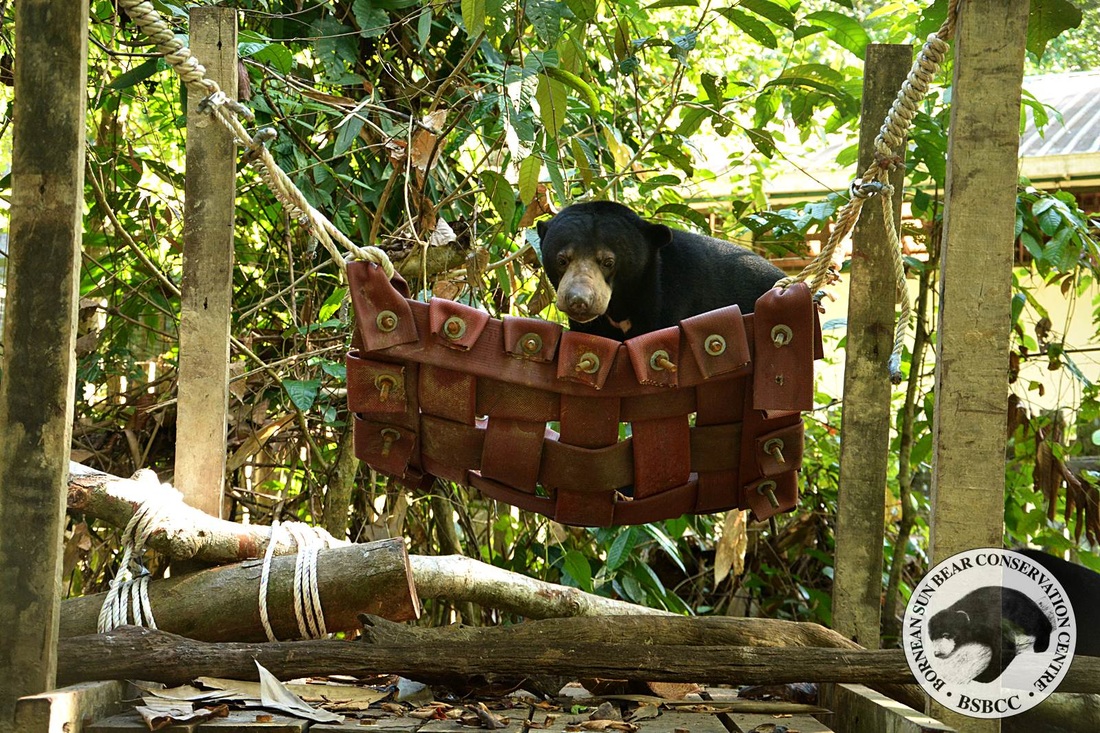
It was the first time ever for a bear to sit on this newly made fire hose hammock, Sunbearo is the one who made the record at 24th December 2015.
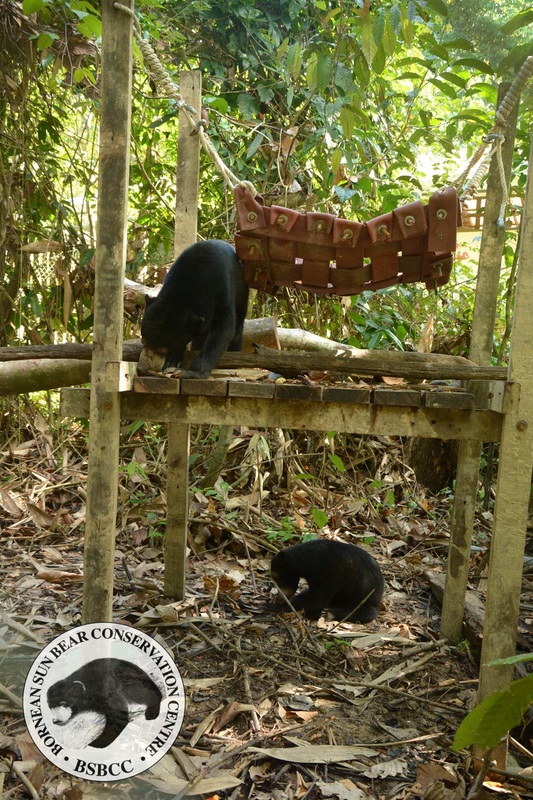
Sunbearo was finding his way to climb down from the mini-platform while Loki was having her precious coconut.
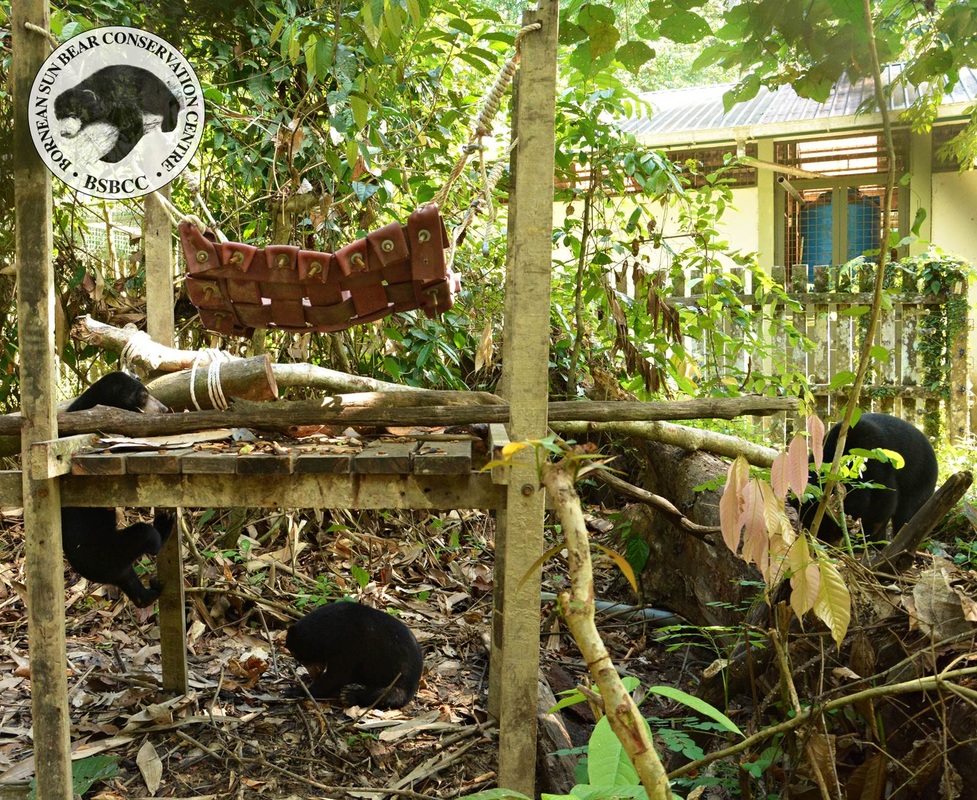
Sunbearo finally got his way to climb down after searching for around one minute; Ronnie (on the right) kept on searching and digging for her favorite ants and termites
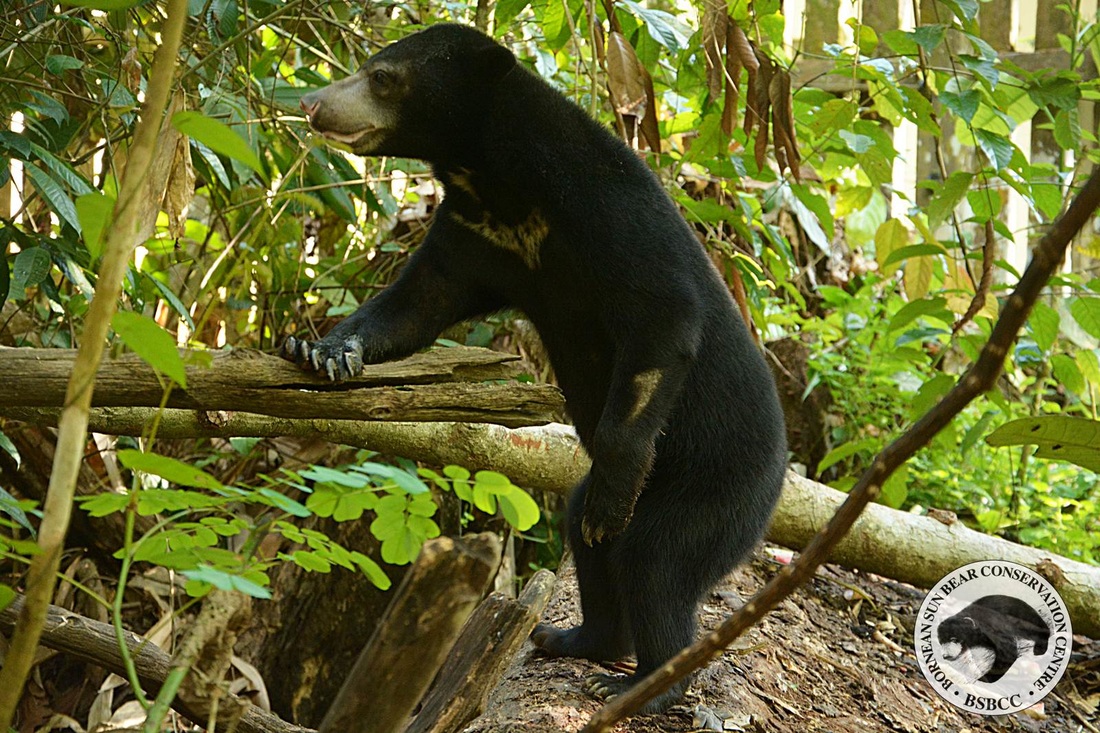
“What is going on right there?” said Ronnie standing up to explore
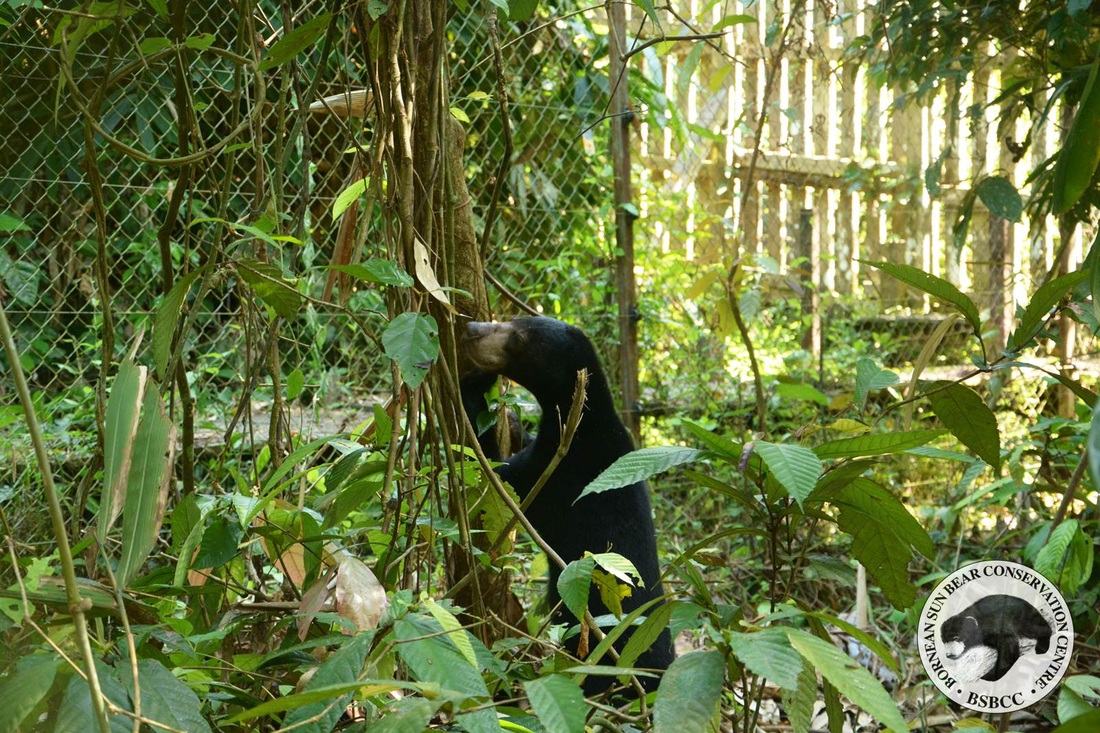
Sunbearo had a thought once to climb the tree and he then went to forage again, we were very concern about this because the bears should know how to climb a tree to build a nest in order to be one of the candidates to be released back to the wild.
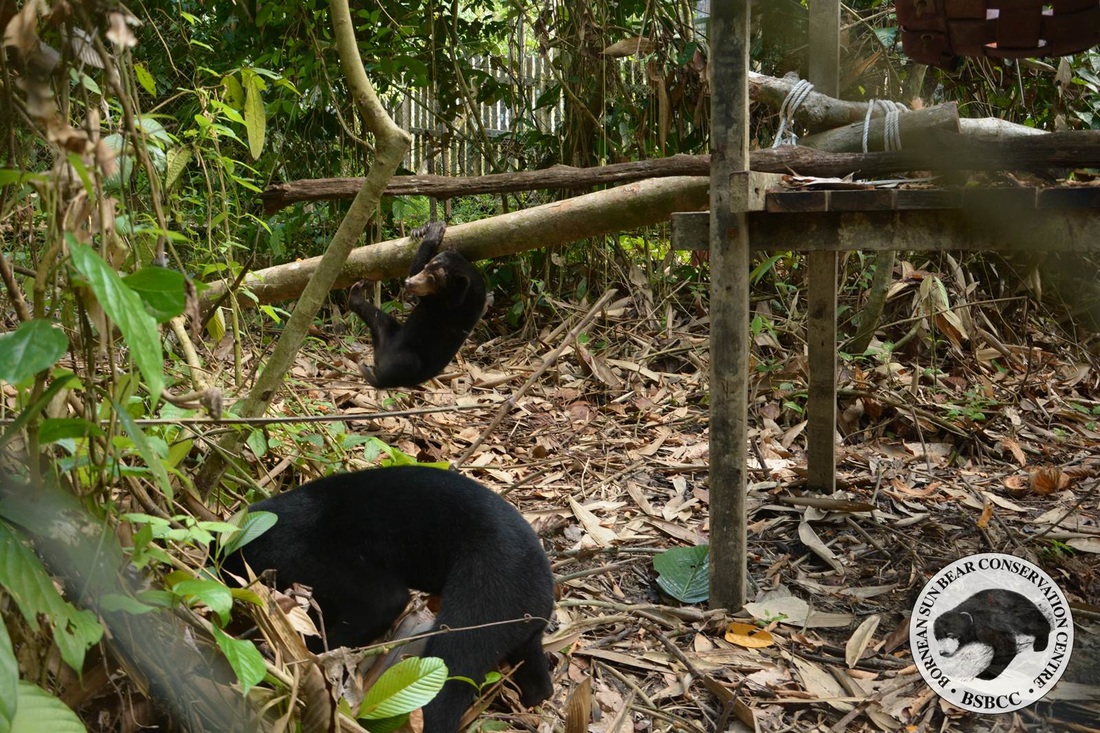
Loki wants to climb down to join Sunbearo to forage for ants
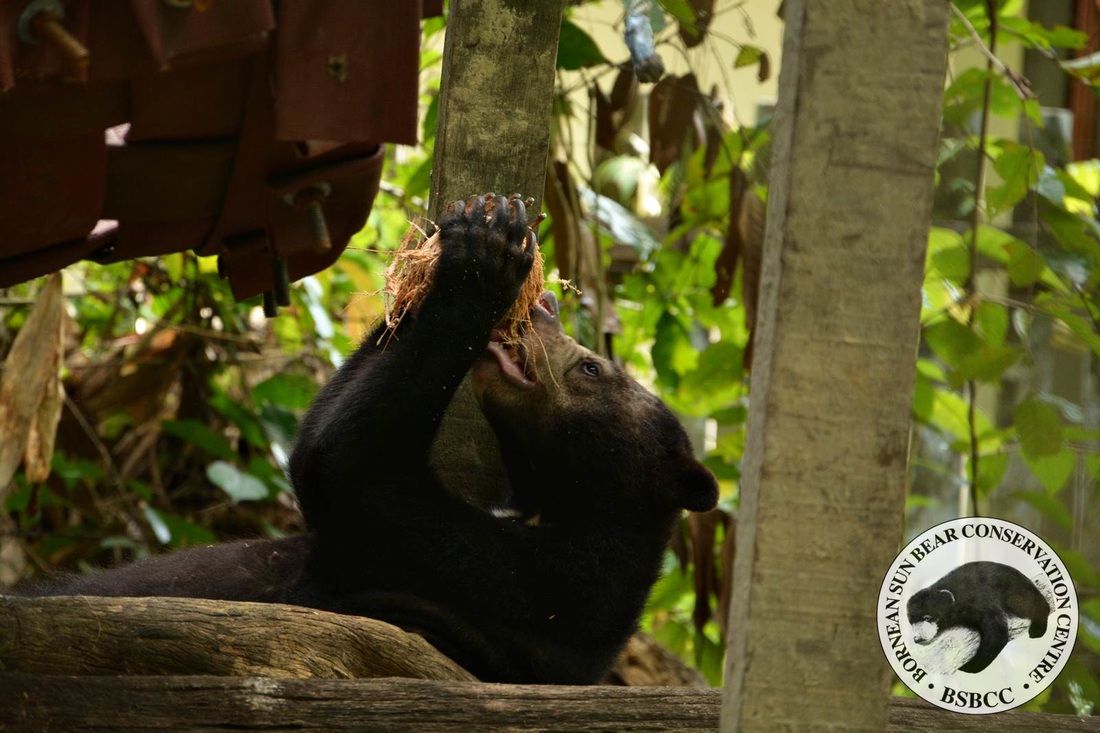
“My precious coconut water” said Loki drinking up as much as she can
On day (28th December 2015), my supervisor, Thye Lim, had a plan to make some food enrichment to be hanged on trees to encourage them to climb. It is a huge success because Loki finally climbed a tree for the first time in her life and successfully climbed her way to get the fruits as her reward. We were then felt extremely happy that Sunbearo and Ronnie also made their first time climbing a tree on the following day (29th December 2015), not only climbed a tree but several trees in the enclosure.
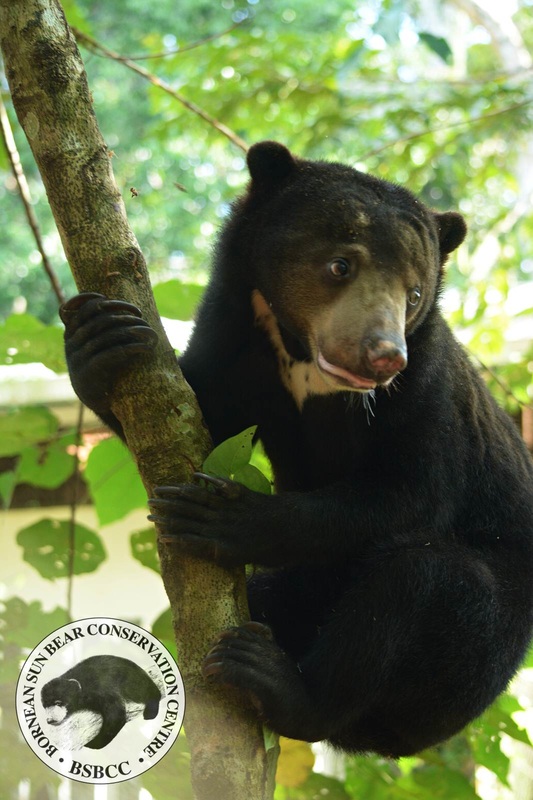
Loki, first climb !! Sun bear have long and curved claws that help them in climb trees.
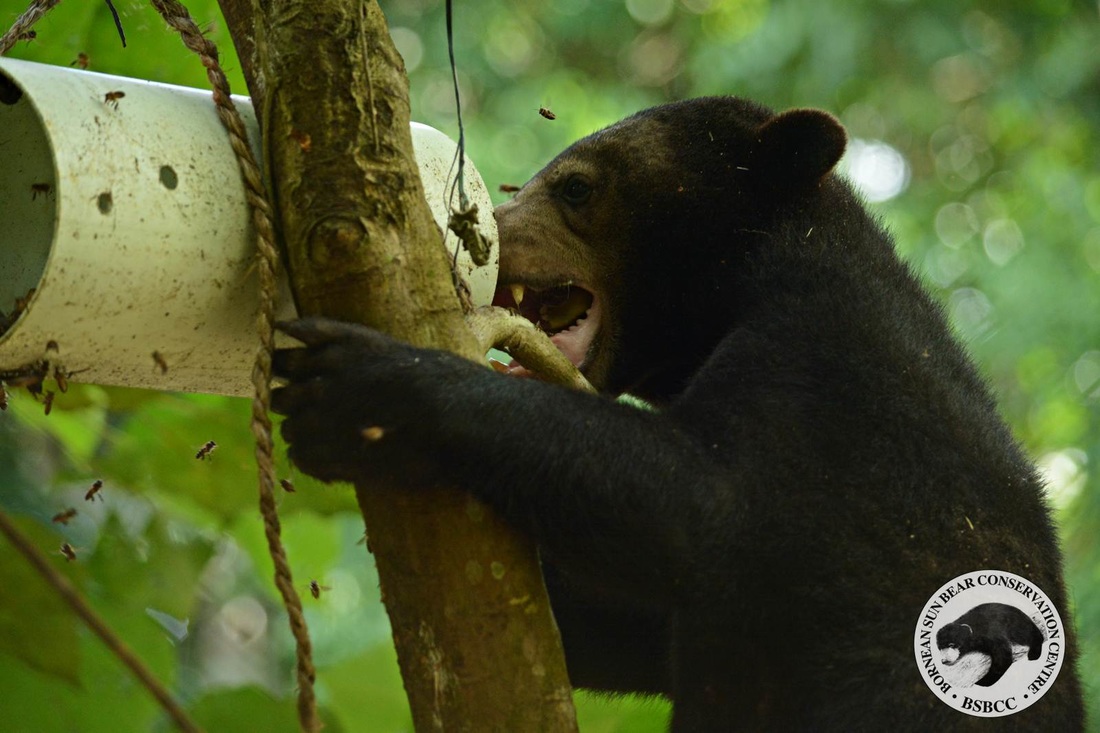
Loki climb trees to get at the honey and honey bees in the Pipe Feeder
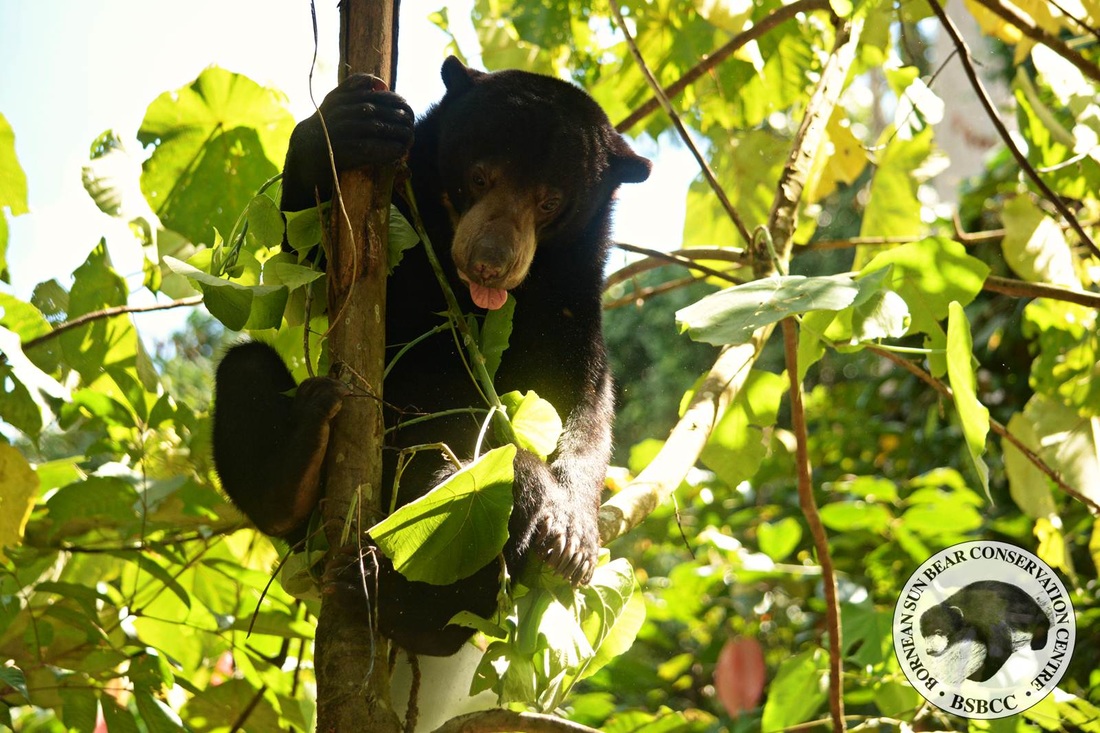
Sunbearo even decided to climb on the tree to have a better view !
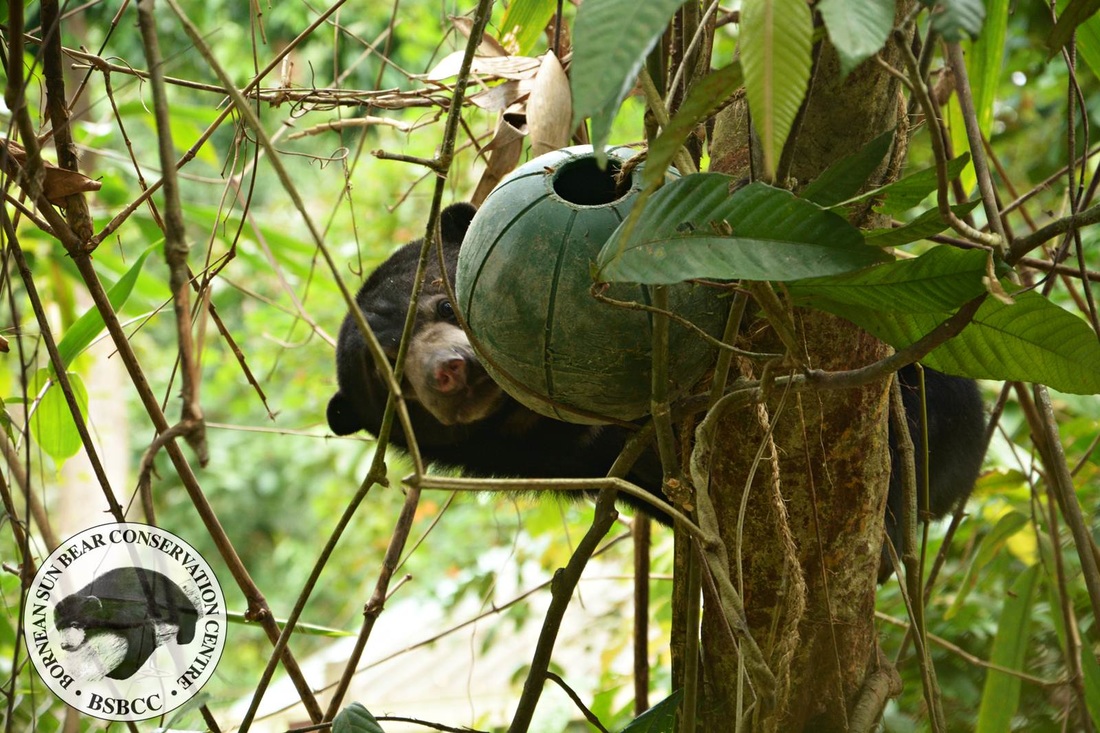
Ronnie playing hide and seek on trees
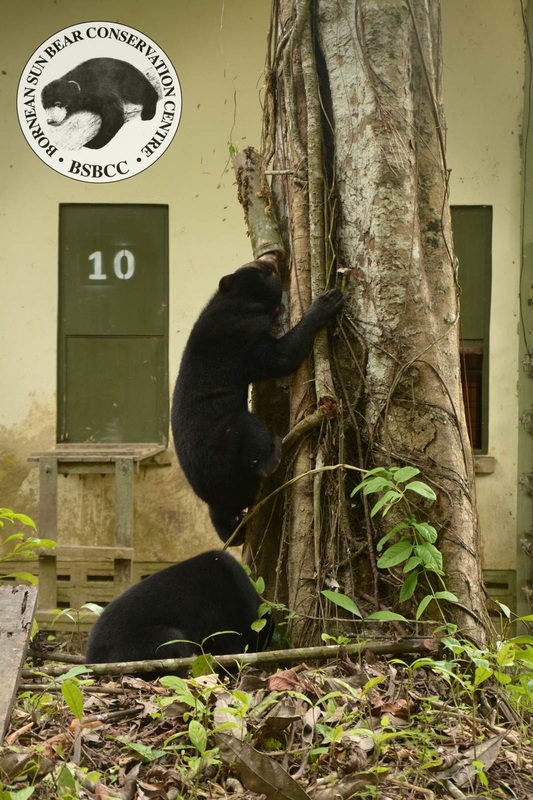
They find a way to get the tasty food out the bamboo feeder.
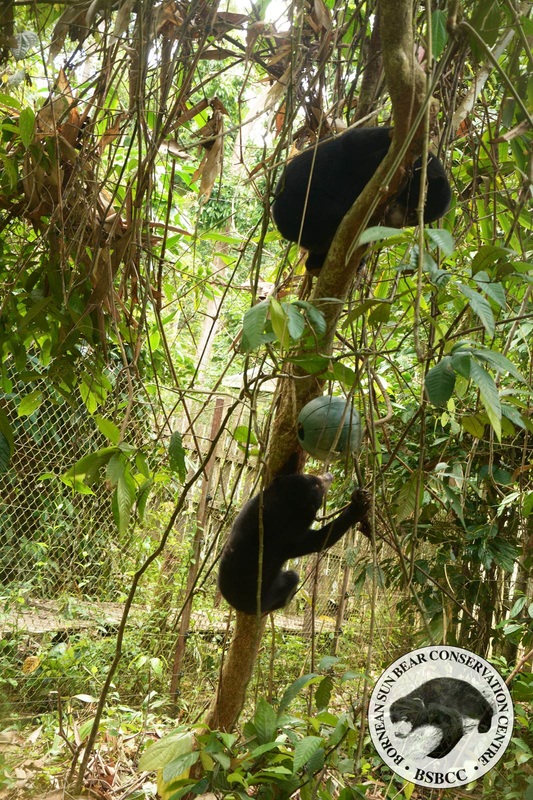
Sun bear learns how to climb when they are young.
It was a nice pleasure and glad to see the bears given the second chance to touch the earth for the first time in their whole life. I like to see them exploring the environment, foraging, digging, climbing trees and sometimes stand up to watch further in alert to the surrounding area, these are what bears should do, and I really hope they can have a good progress to become candidates to be released back to the wild.
No comments:
Post a Comment